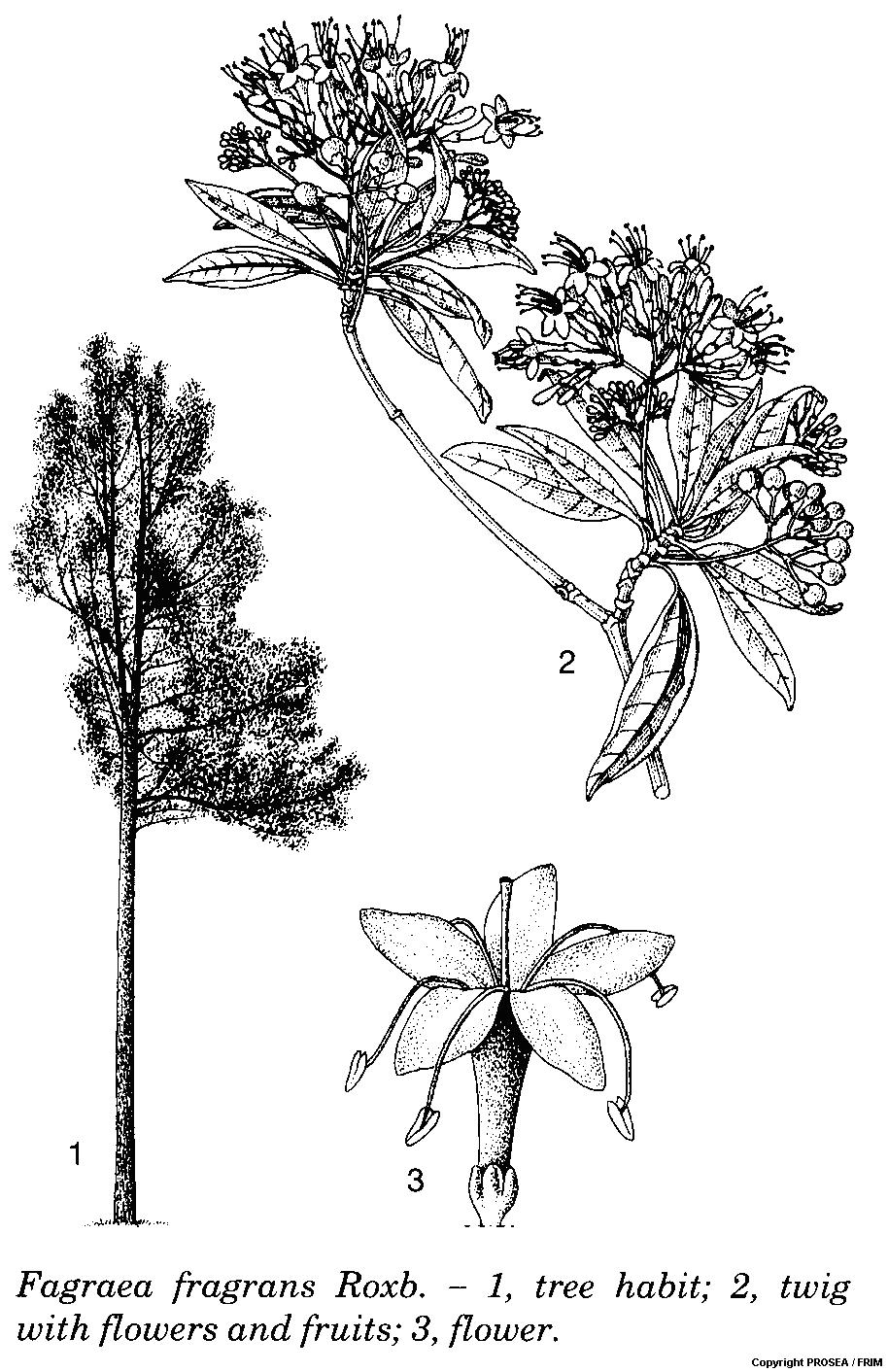Fagraea fragrans Roxb.
Family
Loganiaceae
Synonyms
Fagraea wallichiana Benth., Fagraea cochinchinensis A. Chev., Fagraea sororia J.J. Smith, Fagraea gigantea Ridley.
Vernacular Names
| Malaysia | Tembusu hutan (General), tembusu padang, tembusu tembaga (Peninsular). |
| English | Ironwood. |
| Indonesia | Ki badak (Sundanese), kayu tammusu (Sumatra), ambinaton (Kalimantan). |
| Thailand | Kankrao (Central), man pIa (Northern), thamsao (Peninsular). |
| Philippines | Urung (General), dolo (Tagbanua), susulin (Tagalog). |
| Myanmar | Anan, ahnyim. |
| Cambodia | Tatraou. |
| Laos | Man pa. |
| Vietnam |
Trai. |
Geographical Distributions
Fagraea fragrans is found in India (Bengal), Burma (Myanmar), the Andaman Islands, Indo-China, Thailand, Peninsular Malaysia, Singapore, Sumatra, Borneo, Sulawesi, the south-western Philippines and Yapen Island (Irian Jaya); naturalised in West Java.
Description
Fagraea fragrans is a medium-sized or occasionally large tree up to 25(-55) m tall. Its bole measures up to 135(-250) cm in diametre, occasionally fluted or with buttresses up to 2.5 m high. The surface of the bark is deeply irregularly fissured and dark brown while the inner bark is brown to yellow.
The leaves are oblong-Iance-shaped to obovate-oblong, measuring 4-15 cm x 1.5-6 cm and usually with short to long, broadly acuminate apex. The secondary veins are slightly prominent to indistinct below, 1-2.5 cm long petiole while the stipules are rounded and partly free from the petiole.
The inflorescence is an axillary while the pedicel and bracteoles are at or below the middle. The flowers are fragrant, with narrowly funnel-shaped petal tube, measuring 0.7-2.3 cm long, with headed stigma and faintly 2-lobed.
The fruit is 0.7-1 cm long, broadly ellipsoid and orange or red.
Ecology / Cultivation
Fagraea fragrans occurs in light primary and secondary forests in humid or seasonally inundated locations, but it avoids stagnant water. It grows well in poorly-aerated, compact clay soils, and in poor sandy or shallow sandstone soils. In freshwater swamp forests, it is found in association with Melaleuca spp. It also occurs naturally as a pioneer in burnt-over areas and “lalang” grasslands. The density of the wood is 510-930 kg/m3 at 15% moisture content.
Line Drawing / Photograph
Read More
1) Safety
References
- Plant Resources of South-East Asia No.5(2): Timber trees: Minor commercial timbers.



